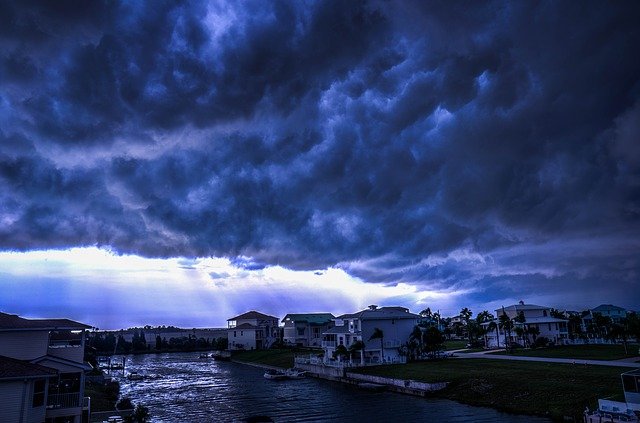Hurricane Ida brings catastrophic losses to Southern States prompting emergency response from the restoration community
Image by Michelle Raponi from Pixabay
As another violent hurricane season descended upon the country, restoration businesses are responding rapidly to help with property recovery and repair efforts.
Hurricane Ida’s landfall in August amassed catastrophic damages to both commercial and residential properties estimated in the range of $27 billion to $40 billion. As storm surge, inland flooding, and wind damage decimated some properties and caused hefty destruction to others, communities across Mississippi, Alabama, and Louisiana braced themselves for the aftermath and months of rebuilding efforts.
Storm Damage
The rebuilding and reconstruction process is affected, not just by the elements and initial damage, but by the insured status as well. According to data analytics from CoreLogic, uninsured flood and wind loss accounts for up to $24 billion in damages during Hurricane Ida with the hardest-hit areas being New Orleans as well as the parishes further west in Louisiana. Hurricane Ida marks the second major hurricane-level storm in 2021, and its landfall occurred as it reached Category 4, bringing with it violent winds in excess of 145 miles per hour. More damage was to come in the days following landfall as winds and storm waters surged into neighborhoods, decimating properties and putting lives at risk.
This is, of course, not the first time the area has seen tragic loss amidst hurricane weather. Landing just 40 miles away from where Hurricane Katrina hit, residents of the coastal states could not help but compare the two storms. Katrina, however, was a different storm, and Ida’s impact was not the same in important ways. Katrina’s much greater storm surges and Category 5 status brought decimation that would put 80% of New Orleans underwater when infrastructure failed. The 2005 storm destroyed much of the coast in Mississippi. The damage caused by Ida, while severe, was not as far-reaching, but that wasn’t the only improvement over past storm results. The gap in flood insurance coverage is shrinking and nearly 50% of flood damage was covered by insurance in the midst of the property damage claimed by Ida.
Preparedness and Response
Preparedness for violent storms is key, and restoration industry leaders like BluSky Restoration Contractors help educate property owners on the steps to take before, during, and after major climate events. “Volatile weather is inevitable during the late fall and autumn months,” said a BluSky representative. “Anticipating need and mobilizing quickly to respond in large-scale catastrophes is the nature of the restoration business, and we are eager to help homeowners understand the process to receiving a timely, quality response.”
When hurricanes strike, having a disaster plan can be a gamechanger in avoiding major property damage. Restoration partners can often provide planning programs and advice to property owners. Understanding the property’s weaknesses and risks becomes an exercise in prevention. With the proper emergency procedures and supplies as well as a working knowledge of your insurance plan, property owners can come out on the other side of a storm with less damage and a strategy for responding to any property restoration needs.
During a hurricane, vigilance is key, and whether you’re on-site or evacuated, NOAA weather radio or television can provide the updates you need to take actions that will keep you and your property safe. These broadcasts will continue well after the storm and can help property owners determine when to return to evacuated areas or safely begin the cleanup process. Property owners should record damage they identify and avoid unsafe areas with downed power lines or buildings in need of major repair. An immediate call to insurance and a reputable restoration company with a disaster response in place is the key to a quick response and rebuilding effort. By having your plan in place beforehand, you’re ahead of the game and ready to move forward instead of reacting in haste.
The multi-phase response to a disaster requires finesse and coordination which is second nature to leading restoration and remediation companies. From smaller, independent companies to large leaders and franchises, the consensus in the industry is the same—restoration response is vital to keeping communities safe and healthy in the wake of natural disasters. Quick mobilization does not mean a rushed job, however, and leading restoration companies are eager to educate property owners on the importance of a thorough, well-developed plan to repair damages. With 24/7 response as the standard in restoration, emphasis is placed on executing well and with a plan by working with insurance providers and property owners to create positive experiences as communities rebuild.

